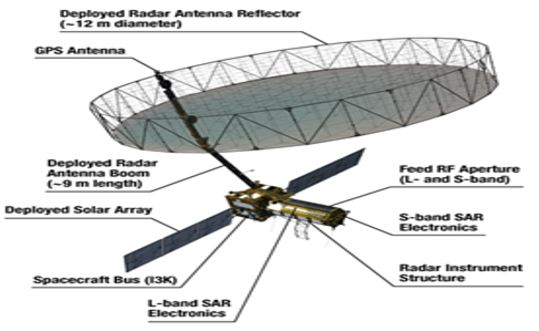

Context
NISAR Mission on track for early 2024 launch.
Key Highlights-
- Launch Date and Status:
- The NASA-ISRO Synthetic Aperture Radar (NISAR) mission is set for an "early 2024" launch.
- The mission is on track, with final tests scheduled for the current week.
- Testing Update:
- All tests, except the acoustic tests, have been completed.
- Vibration test was successfully conducted, marking progress in the mission's preparation.
- Enormous Data Volume:
- NISAR is designed as a low earth orbit (LEO) observatory with a unique feature of generating an enormous volume of reliable, high-resolution data over a three-year mission life.
- The data will be valuable for scientific research, monitoring applications, forest management, agriculture monitoring, and disaster monitoring.
- Open Science and Data Policy:
- NISAR adopts an open science and open data policy, making it distinct in its scope.
- Processed and validated data will be made open to the public on data servers in both India and the U.S., enhancing accessibility.
- Observation Capabilities:
- NISAR employs synthetic aperture radar to scan Earth's land and ice-covered regions twice every 12 days in ascending and descending passes.
- Capable of penetrating cloud cover and operating day and night, NISAR is expected to revolutionize earth-observing capabilities.
- Mission Objectives:
- NISAR aims to provide spatially and temporally consistent data for understanding changes in Earth’s ecosystems, ice mass, vegetation biomass, sea level rise, groundwater, and natural hazards.
- It will serve as a reliable data source for disaster monitoring and mitigation.
|
Background:
About NISAR:
|


